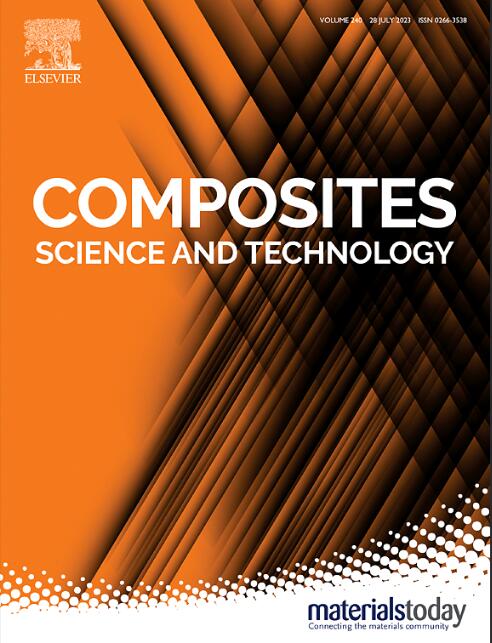Drawing of tungsten fiber tows impregnated with Al/Epoxy matrix composites: Interfacial bonding and failure
IF 8.3
1区 材料科学
Q1 MATERIALS SCIENCE, COMPOSITES
引用次数: 0
Abstract
The most widely used high-performance resin matrix composites generally follow the microparticle-fiber-epoxy resin system structure. However, due to the difference in material properties of each component, the failure of fiber-reinforced resin matrix composites is often caused by its internal load inhomogeneity. In this paper, digital image technology is used to quantify the micro-failure form of the interface between fiber and epoxy resin matrix based on droplet solidification experiment and tungsten fiber impregnation tensile experiment. The upper and lower limits of coupling between fibers in fiber-reinforced polymer matrix composites were quantified, and a universal prediction method for the strength of fiber-reinforced particle-doped resin matrix composites was developed. The research results show that: A small amount of Al particles inclusion can enhance the affinity between the epoxy resin matrix and the tungsten material, thereby improving the mechanical properties of the fiber reinforced resin matrix material. When the amount of aluminum particles is 15 vol%, the viscous flow performance of the epoxy resin is similar to that of the pure epoxy resin. The load-bearing efficiency will be generated by the mutual nesting at the interface in the epoxy resin-tungsten fiber structure, where the maximum insertion depth is 9.08 μm and the average insertion depth is 4.69 μm. The maximum tensile load shows a trend of increasing first and then decreasing with the increase of aluminum particle volume content, reaching its maximum value at a volume inclusion of 40 vol%. The closer the epoxy resin matrix to the fiber, the greater the effect on the interfacial chelation effect, in which the effective interphase thickness is 0.128 times the fiber radius. The energy absorption of pure epoxy resin-single fiber bonding phase is 138.45 MJ/m3, while the energy absorption of the effective bonding area between epoxy matrix and tungsten fiber is between 76.52–224.95 MJ/m3 when aluminum particles are mixed.

求助全文
约1分钟内获得全文
求助全文
来源期刊

Composites Science and Technology
工程技术-材料科学:复合
CiteScore
16.20
自引率
9.90%
发文量
611
审稿时长
33 days
期刊介绍:
Composites Science and Technology publishes refereed original articles on the fundamental and applied science of engineering composites. The focus of this journal is on polymeric matrix composites with reinforcements/fillers ranging from nano- to macro-scale. CSTE encourages manuscripts reporting unique, innovative contributions to the physics, chemistry, materials science and applied mechanics aspects of advanced composites.
Besides traditional fiber reinforced composites, novel composites with significant potential for engineering applications are encouraged.
 求助内容:
求助内容: 应助结果提醒方式:
应助结果提醒方式:


